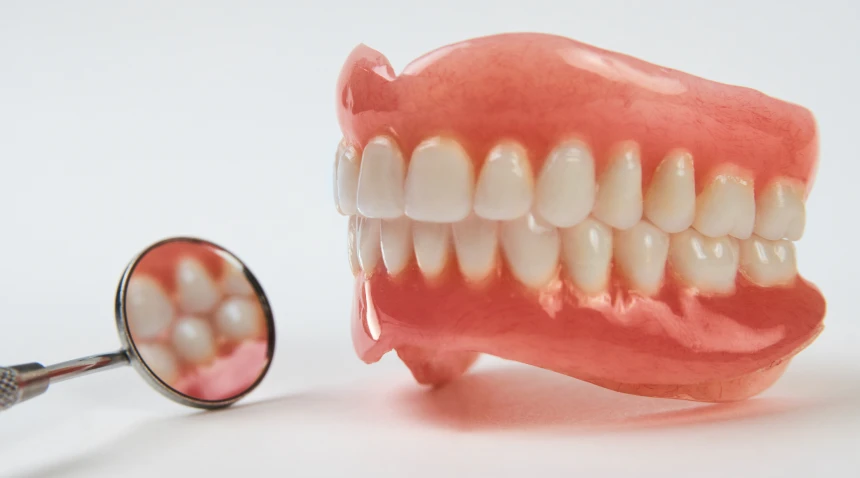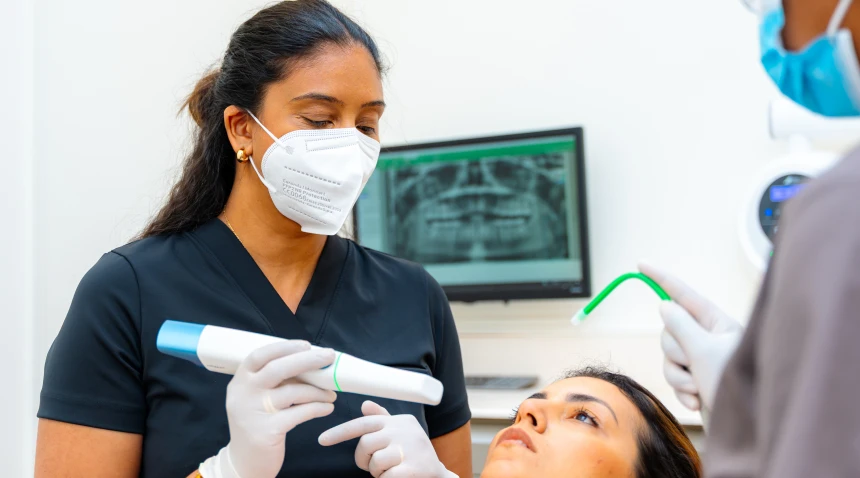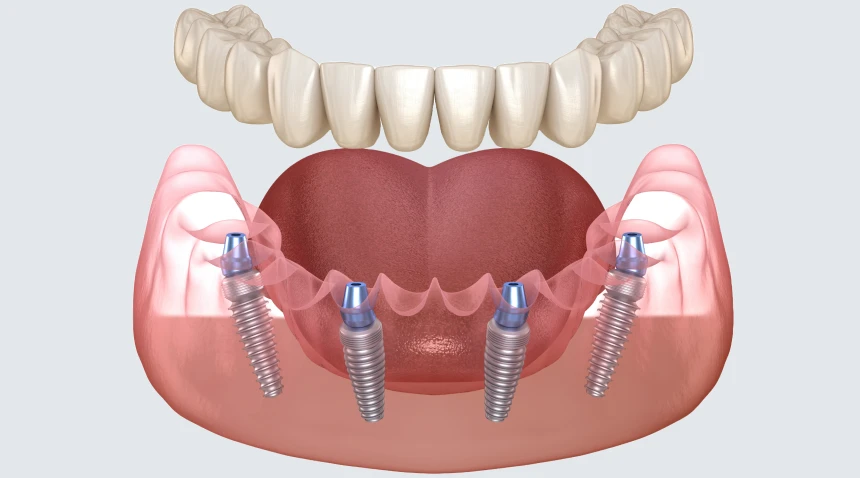The All-on-4 technique is a fixed dental rehabilitation solution that replaces an entire dental arch using only four implants. This approach is designed for patients who are completely edentulous or about to lose all their teeth, whether in the upper or lower jaw.
The procedure involves placing two straight implants at the front of the jaw, where the bone is usually denser, and two posterior implants at an angle. This configuration maximizes stability while often avoiding the need for bone grafting. It allows for the immediate stabilization of a full prosthesis, which can often be fitted on the same day as the surgery.
All-on-4 is therefore an alternative to removable dentures, providing patients with greater comfort and improved stability in everyday life.
Who can benefit from this solution?
This approach is mainly intended for patients who have lost all their teeth or whose remaining teeth cannot be preserved. It is suitable for cases involving advanced periodontitis, irreversible tooth fractures, or generalized tooth wear.

People who have worn removable dentures for several years but experience difficulty eating or speaking can also benefit from All-on-4 treatment. With a modern fixed prosthesis, patients regain a natural chewing function, daily comfort, and renewed confidence.
Before proceeding, the dentist must perform a comprehensive health assessment. Certain medical treatments, surgical histories, or chronic conditions can affect the feasibility and course of treatment.
Steps of the All-on-4 procedure
The success of this treatment depends as much on the precision of the surgical procedure as on the patient’s involvement in postoperative care. A trusting relationship with the dentist helps ensure a clear understanding of each step and promotes a calm, confident experience.
1. Initial consultation and clinical assessment
During the first appointment, the dental surgeon performs a complete clinical examination, reviews medical history, expectations, and lifestyle habits. A 3D scan is then used to evaluate bone volume, anatomical structures, and potential implant sites.
Based on this assessment, the dentist designs a personalized treatment plan and explains the steps, precautions, and expected timeline.

2. Surgical planning
Using digital simulation tools, the dentist plans the precise placement of the implants. This preparation minimizes risks during surgery and ensures optimal adaptation of the prosthesis.
It also helps reassure the patient by allowing them to visualize the implant positions and better understand the procedure.
3. Implant placement
The surgical placement of the four implants is usually completed in a single session under local anesthesia. Conscious sedation may also be offered for added comfort.
Once the implants are placed, a temporary prosthesis can often be attached the same day, allowing the patient to leave the clinic with a functional and aesthetic smile.
4. Healing and osseointegration
During the following months, the implants integrate naturally with the bone through a process called osseointegration. This phase, lasting between three and six months, ensures long-term stability.
The patient continues to wear the temporary prosthesis while following specific dietary and oral hygiene recommendations.
5. Placement of the final prosthesis
Once osseointegration is complete, the dentist replaces the temporary prosthesis with the permanent one, custom-made to match the patient’s facial features. It provides both aesthetic harmony and optimal chewing comfort.
6. Follow-up and maintenance
Regular follow-up appointments are essential for the longevity of the treatment. The dentist checks implant stability, prosthesis condition, and oral hygiene.
Why choose All-on-4 in certain situations
In some clinical situations, it is no longer possible to preserve natural teeth. Severe periodontal disease, trauma, or chronic infections can make the dentition non-viable. In these cases, the All-on-4 protocol offers a stable and long-lasting solution.

This technique limits the number of implants required, which can shorten treatment time and reduce the number of surgical procedures. In addition, the angled placement of the posterior implants optimizes bone support even in cases of bone resorption.
Another advantage of this approach is that it often allows for immediate loading, meaning the patient regains chewing function on the same day as the surgery. This contributes to improved psychological and social comfort.
What to expect before starting All-on-4 treatment
Before beginning treatment, the patient must understand its goals, limitations, and necessary commitments. The dental surgeon takes time to explain each step, the expected results, and the long-term care required.
This treatment represents a lasting change in the patient’s daily life, requiring preparation on physical, emotional, and logistical levels.
The dentist also assesses the patient’s overall health and may collaborate with other healthcare professionals, such as a general practitioner or cardiologist, to adapt the protocol to the patient’s medical history. This multidisciplinary coordination ensures a safe and personalized approach.
FAQ – Frequently asked questions
- Is the treatment painful?
The procedure is performed under local anesthesia. The dentist prescribes postoperative medication to prevent discomfort such as pain or swelling. Generally, recovery is mild and well managed. - Is bone grafting necessary?
Usually not. Thanks to the angled position of the posterior implants, the All-on-4 technique often eliminates the need for bone grafting, even when bone volume is limited. - Can I eat normally with the temporary prosthesis?
Yes, but it is recommended to favor soft foods during the first few weeks. This promotes healing and reduces mechanical stress on the implants. - How long does the final prosthesis last?
With proper maintenance and regular follow-up, the prosthesis can last 10 to 15 years or more. The durability depends on the quality of the materials and the patient’s oral hygiene. - What is the cost of treatment?
The cost varies depending on clinical factors, materials used, and the complexity of the treatment. A personalized estimate is always provided after the initial assessment.
A personalized approach
Every mouth is unique. It is essential to consult a qualified practitioner to assess whether the All-on-4 treatment is appropriate. The Cabinet dentaire Mirabeau, located in Paris 16, welcomes patients in a setting focused on care, comfort, and attentive listening. You can book an appointment online for an initial consultation and receive personalized support tailored to your needs.
You may also like: Implant-supported prosthesis